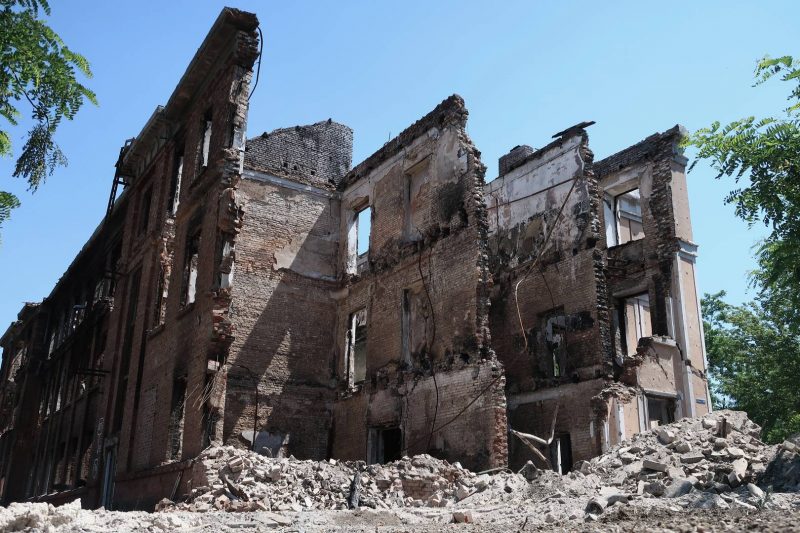To say an untruth, to fail to fulfill a promise made to the people, when there is an acute demand not for promises, but for their fulfillment, is a self-defeating approach.
In the meantime, the garrison of the Illich Steel and Iron Works surrendered. Our stocks of food, cereals and tinned food began to run out, fortunately, we had plenty of this: an old habit of making strategic reserves of food for a rainy day.
It was also difficult with water, we had to go to a well. It was a kilometer and a half walk to the well. It did not seem that far, but based on my recent experience – it was scary. But we had to take a risk, so we went – and successfully returned. Nothing terrible happened, and explosions somewhere in the distance, yes, extremely unpleasant, but not dangerous. Another time, on our way back, we encountered a DPR military patrol walking toward us. We got to talking, joked, wished each other good health, and parted with sincere smiles, – even though the military is still a cause for concern.
The drinking water was taken care of. To use it as technical water was sometimes a necessity. We could only dream of a large-scale washing and a shower. But the food was still an issue, and stores were looted clean.
Those who still had personal vehicles went to neighboring Sartana and Talakovka for groceries: the farther away, the cheaper. Here a whole problem of an organizational nature arose: who needs to make a pass for travel outside the city, and who does not. I learned that if you’re not driving or going by car, you do not need a pass. So one day I joined acquaintances of mine, and April 29, we all went together on bicycles to Talakovka. Although I did not ride for more than two months after February 22, and we ate very economically because we did not know how long it would last, I was in good physical shape. I was most worried about pieces of glass and fragments of the shells: if I cut the rubber, the bike would be out of order for an unknown period of time.
At the checkpoint, the military hinted that soon they would not let me through without a pass. It is understandable: the city had been under Ukrainian occupation for a long time, and Azov (organization banned in Russia) ruled there, upbringing “worthy replacements” from an early age. And Ukrainian military and many SBU (Security Services of Ukraine) officers could simply “go off the radar”, so letting anyone out without a thorough identity and background check is tantamount to letting the “brown plague” loose. The other thing is that there are very few places where it is possible to pass this check, and one can stand in line for days. People are well aware of the inconvenience this creates, especially for those who do not have their own vehicles or who have no one to leave their homes with so they cannot be looted – but they also understand the cost of a mistake.
On April 29, electricity was restored in Talakovka. The village was almost undamaged: the residents were evacuated to Mariupol, and there was almost no fighting there. There are queues in the stores. One hears endless bickering between the locals and those coming from neighboring villages and towns: “Why are you constantly coming here?..” It’s extremely annoying to hear such things from those who didn’t live through even a fraction of what we went through! We came here because we need food badly!
On the way back, breaking away from the others (the difference in physical fitness hasn’t gone anywhere, and I don’t feel comfortable riding slowly), I stopped at a monument to the soldiers fallen during the liberation of Talakovka from the German invaders, located not far from the road.
The bike ride didn’t end there: I met some of my old buddies from among the enthusiastic cyclists, from whom I learned a lot of news. One of them saddened me because it confirmed the following assumption: since the Ukrainian armed units did not let anyone out of the city, they did not let the Ukrainian regime supporters out either, and anyone could have been shot, regardless of political views.
So, May has come. Everyone who have luckily avoided the anatomical theater, have entered the bureaucratic theater. Lists, lists, lists. Applications for this and that.
Our street is small, there are only seven yards left, and we can’t organize ourselves. There are many reasons for this, including the personalities of some of our neighbors. First of all, we have been deceived one way or another, here or there. They have been doing this since 1990 (if not earlier). But since 2014, the scale of lying was immense, which has formed an environment of general distrust. (For the past eight years, frankness has been life-threatening.) This distrust, which has become part of the mentality along with indifference to others’ fate and other manifestations of self-will, is very difficult to break only by the internal efforts of the community itself: the rulers are changing, while local residents remain the same, accustomed to the old way of life and who have learned to survive in it and achieve something. When everyone is satisfied with everything, everything remains as it was before. The best is the enemy of the good, the proverb says. But other words are also right: it is impossible to help a human being (and society) without his consent. This is indeed complex!
How is it possible to induce a desire for change? To show examples of the better order of society, to cause trust of people within themselves, among themselves, and between people and power. Excessive bureaucratization and constant, unjustified changes in the rules give rise to the feeling that the concept of “no official documents – no man” has not been changed. This can lead to the rejection of anything new, even bright; behind these dry trees you can no longer see the forest of life. All trust is extremely easy to lose, but not always possible to regain; it is a losing position, especially when a significant number of residents are at best ultra-skeptical (and there are also lurking opponents, of whom there are not as many as one would like), trusting nothing but the honestly done work as if one were doing it for oneself.
But in spite of all the problems, obvious still hidden, the city is reborn. In many ways we have managed to preserve the Memory, and here is evidence of that.
A sculpture of a grandmother with a Victory Banner was installed on Soldier-Liberators Square. The statue is temporary, it was supposed to be taken away on May 16, but it still stands in the same place.
It would be appropriate to mention the following. The monuments of the Soviet era in Mariupol suffered a little more than in neighboring towns, which is self-evident if you understand who ran the city. The fact that they were preserved even without their full attributes is a miracle in itself, but what I saw in the towns and villages around Mariupol is inexcusable from the point of view of decommunizers, but it’s a fact.
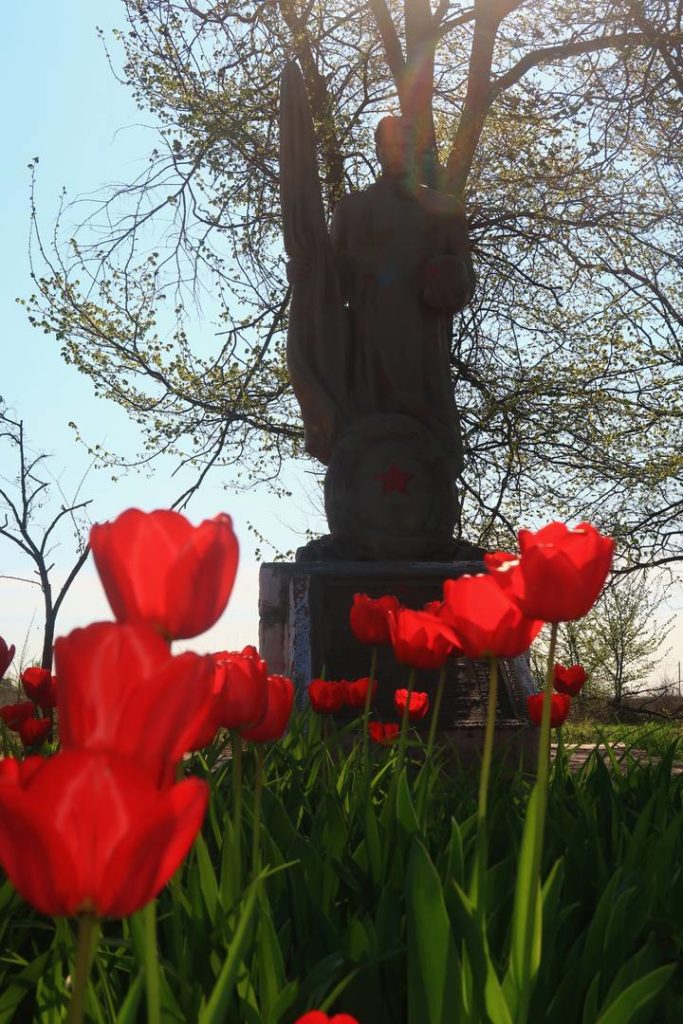
Photo by Victor Svobodny ©
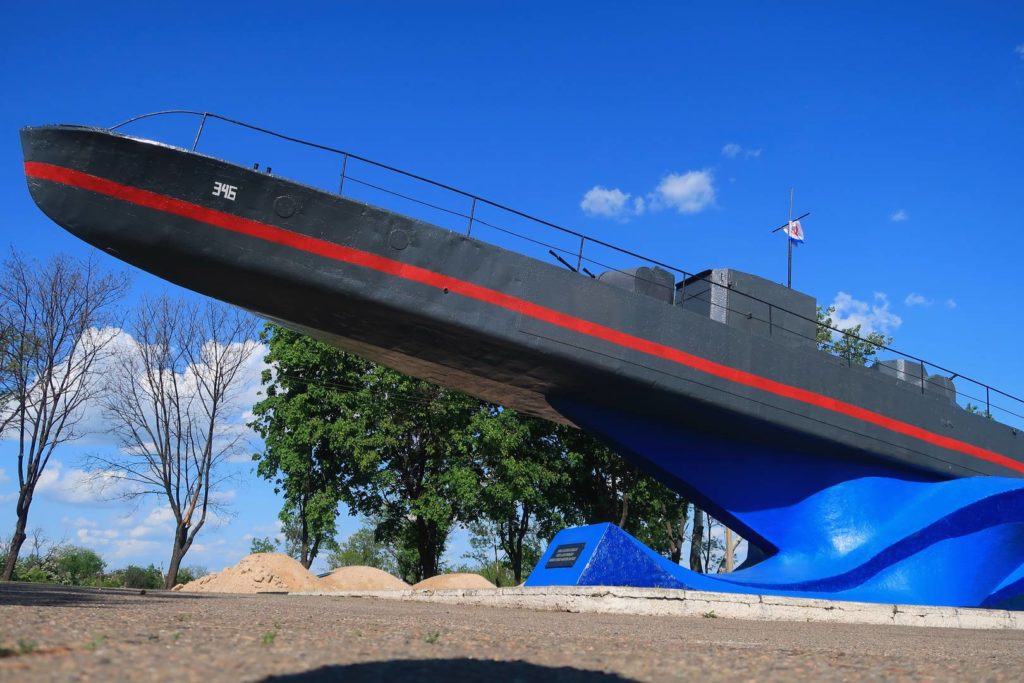
Photo by Victor Svobodny ©
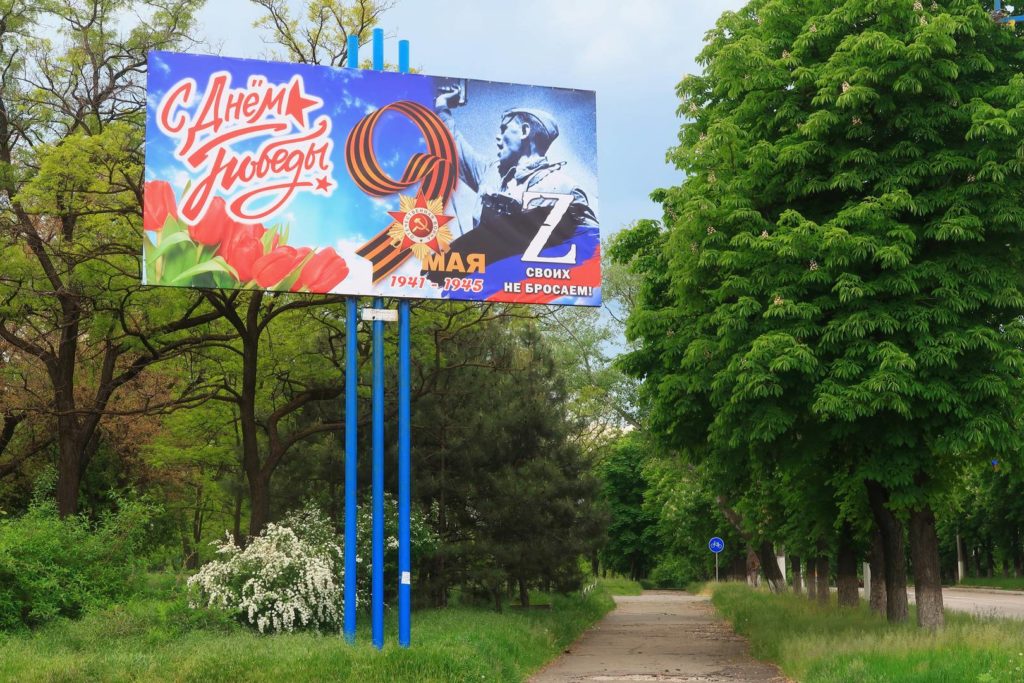
Photo by Victor Svobodny ©
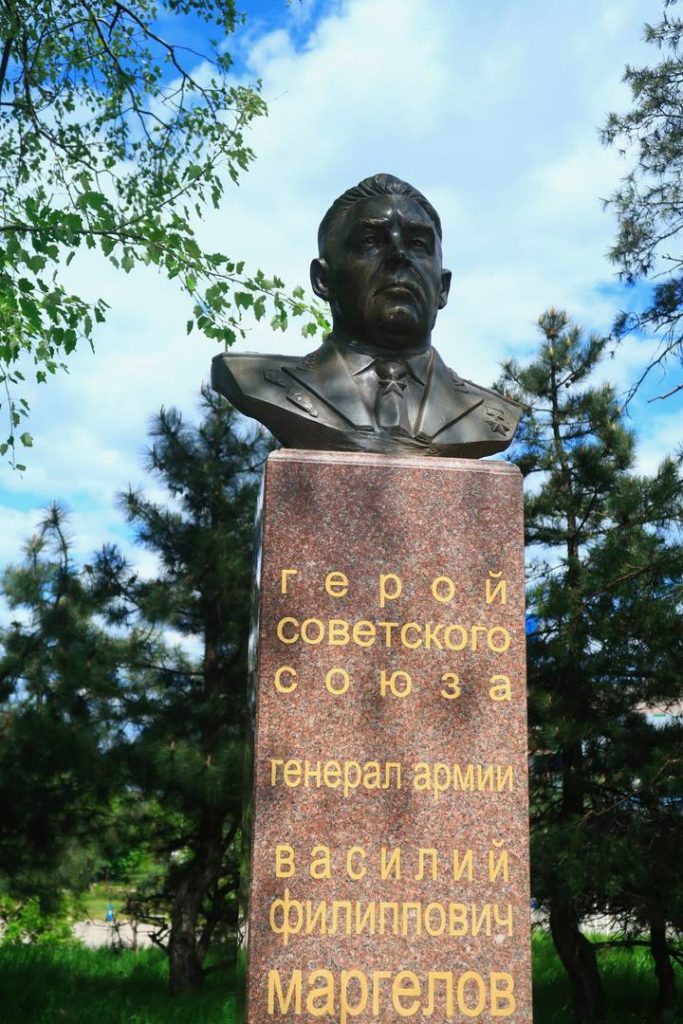
Photo by Victor Svobodny ©
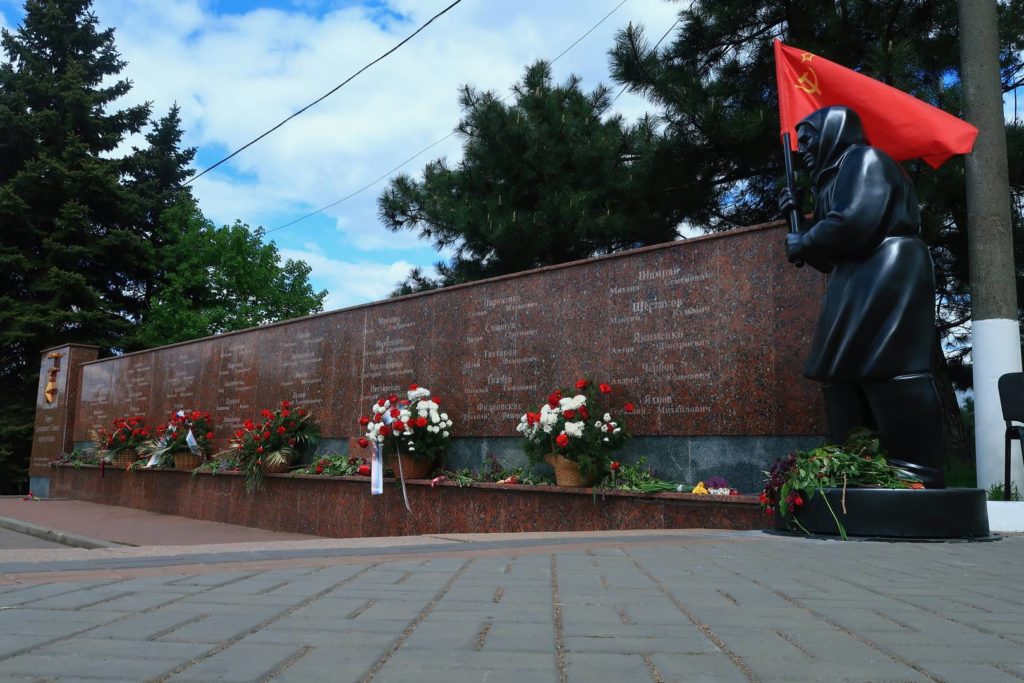
Photo by Victor Svobodny ©
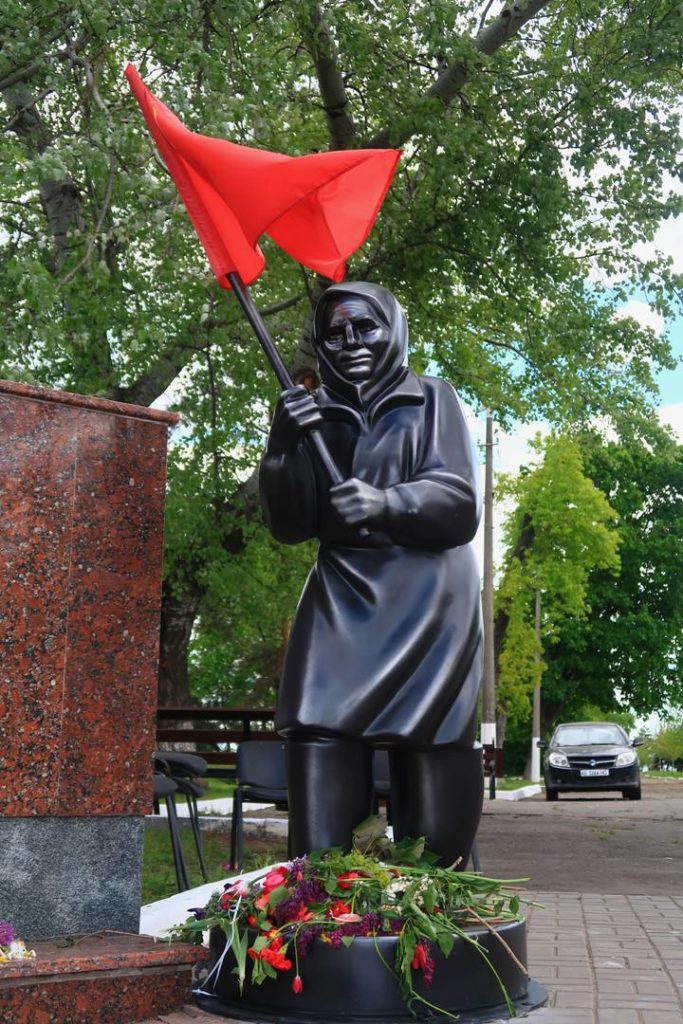
Photo by Victor Svobodny ©
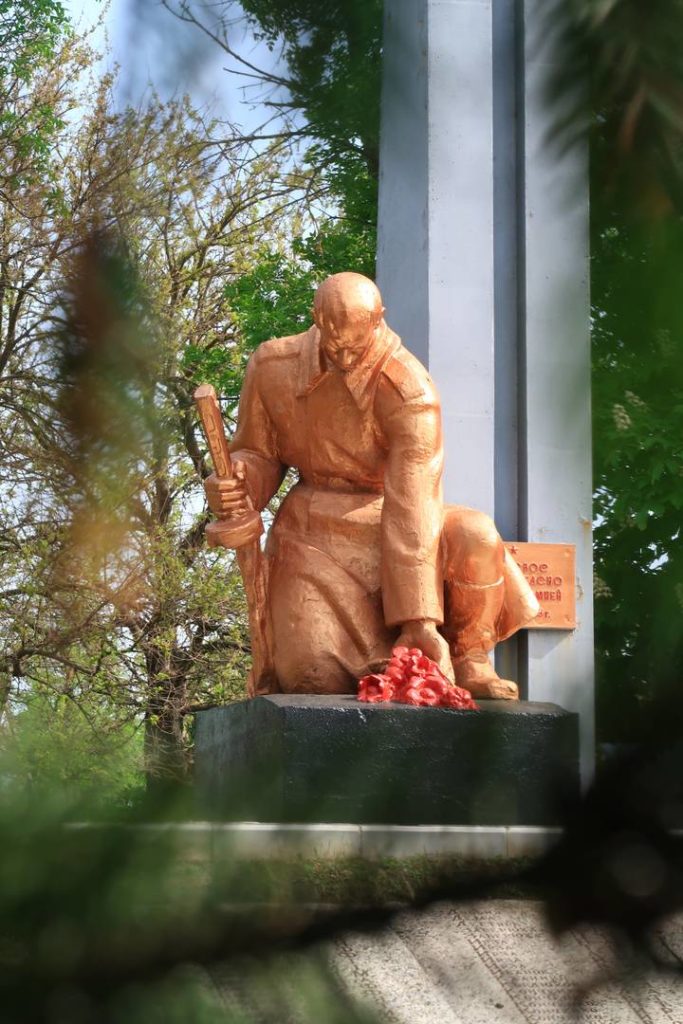
Photo by Victor Svobodny ©

Photo by Victor Svobodny ©
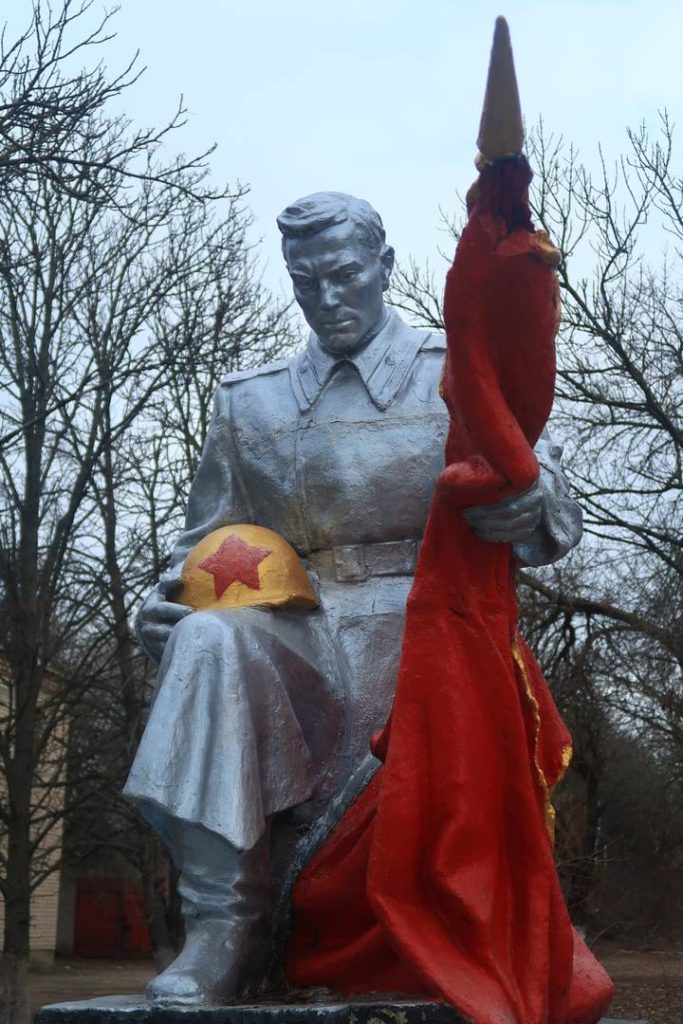
Photo by Victor Svobodny ©
In mid-May. The combat was still underway at Azovstal. Once a munition was fired from there which hit the area of the humanitarian aid office on the 232nd quarter (which started working in April, a month later than on Kurchatov), but it flew over the humanitarian aid office and hit a nine-story building. At night, lights produced by flare ammunition were seen from the windows in the direction of the plant: the blockade of the garrison entrenched there was going on day and night, the territory of the plant was hit by artillery and aviation. The air shook from the powerful though distant bursts, whistling through the gaps between the pieces of Styrofoam inserted in the frames instead of double-glazed windows.
The badly battered seaport was being cleared of mines and prepared to receive and dispatch its first cargo.
The city was still being cleared of debris and the roads were full of splinters and fragments of the shells, but I rode my bikes more and more actively: physical fitness needed constant maintenance, especially since I was a bicycle marathoner. I visited the infamous Drama Theater several times. Even the employees of city’s department of recreation and parks were not allowed to walk on the lawns. An elder of them told me: there could be explosive “surprises”, and they themselves were allowed to work after signing special documents.
The neighborhood of the theater was also depressing. But the old houses with spires suffered comparatively little damage.
As to whether or not a bomb had been dropped on the Drama Theater, residents of neighboring houses claim the opposite. According to one of the residents, whose apartment just looked in that direction, people were gathered under the pretext of giving humanitarian aid from the Ukrainian army. But then the shelling started, and people started to be led inside the building. A few people suspected something was wrong and tried to escape, but they were stopped by shots in the back. After a few more minutes, several people in military uniforms ran out of the theater, and then a powerful explosion was heard. There was no aviation in the sky.
When the road on Slobodka was cleared, I risked driving on it. The area around Liberation Square (known as DOSAAF, a local name that could not be de-communized or erased from the memory of Mariupol residents) still bore remnants of recent street battles.
Renovated last year, the pier, which became an observation deck extending to a cable length and a half from the shore, was almost undamaged. Somehow, a piano was not used as firewood, but it was significantly damaged though. Not all pianos were so lucky.
In general, I don’t like to shoot military equipment, let alone servicemen, at least because I don’t want to endanger the safety of their lives. But I did make one shot: the memory of the events must not fade away without a trace.
Someone carefully got rid of the Ukrainian military uniform and put it near the school. Who left it? Where is he now? What did he do in that uniform, what is he doing now, what can we expect from him in the future?
In the meantime, since May 16, all of a sudden and out of the blue, the cannons stopped shooting from the northern outskirts of the city. For how long? Why? We listen to the radio: civilians left Azovstal, then the military garrison began to surrender. May 21 – finita la tragedia! Mariupol has survived!
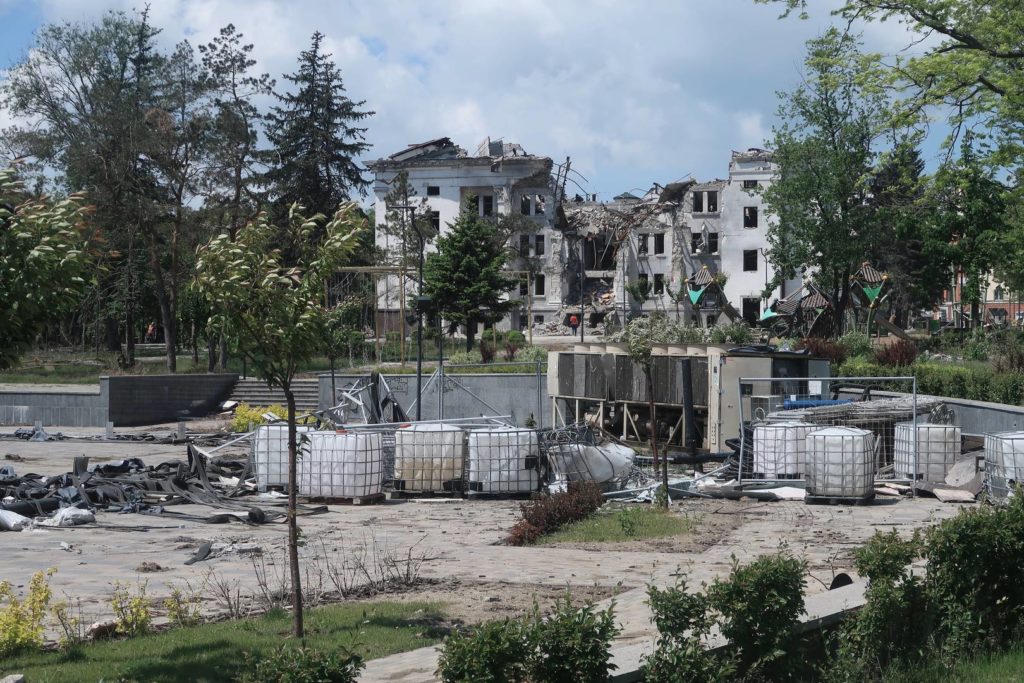
Photo by Victor Svobodny ©
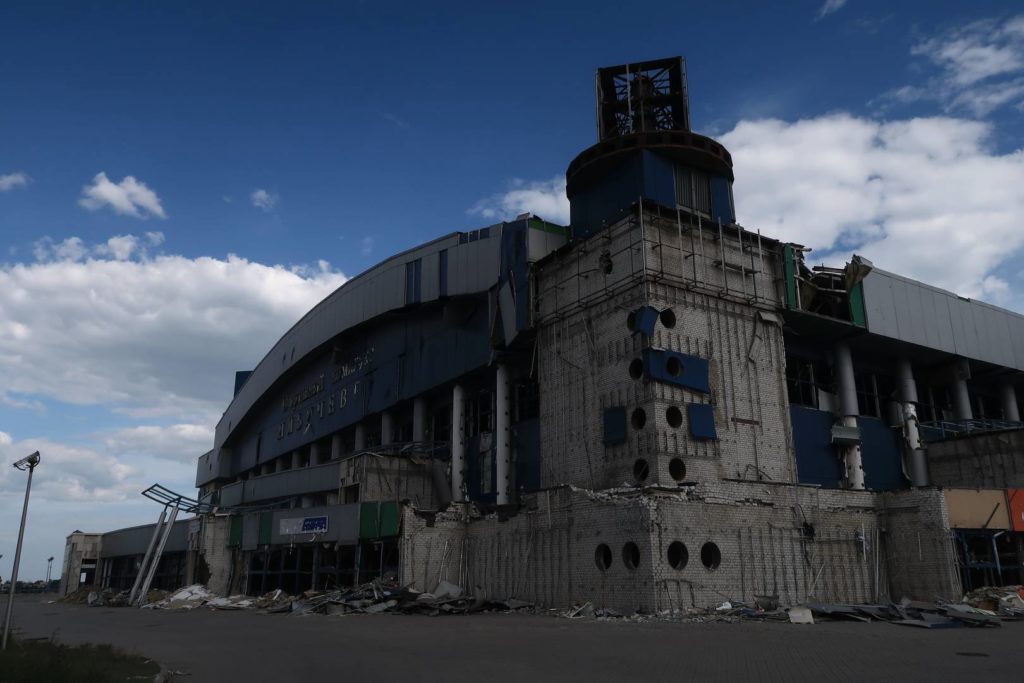
Photo by Victor Svobodny ©
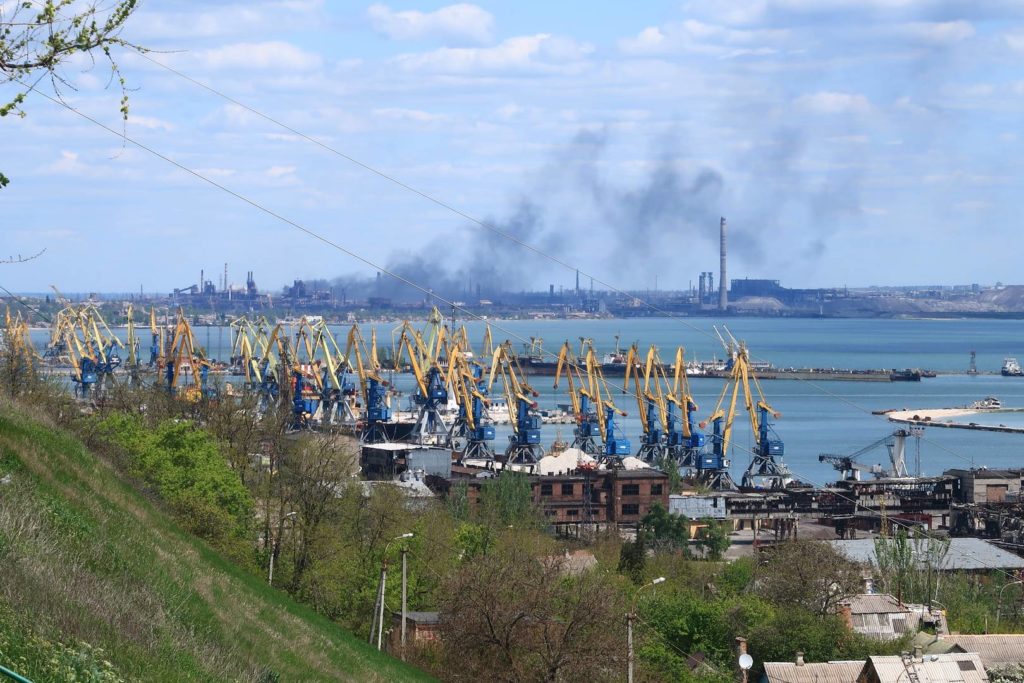
Photo by Victor Svobodny ©
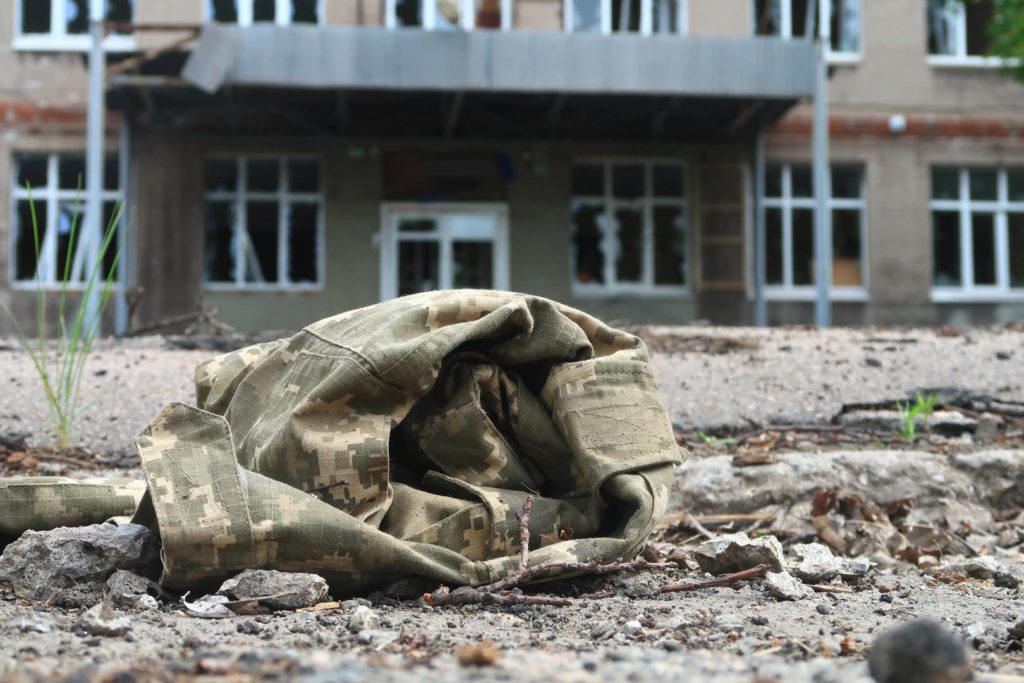
Photo by Victor Svobodny ©
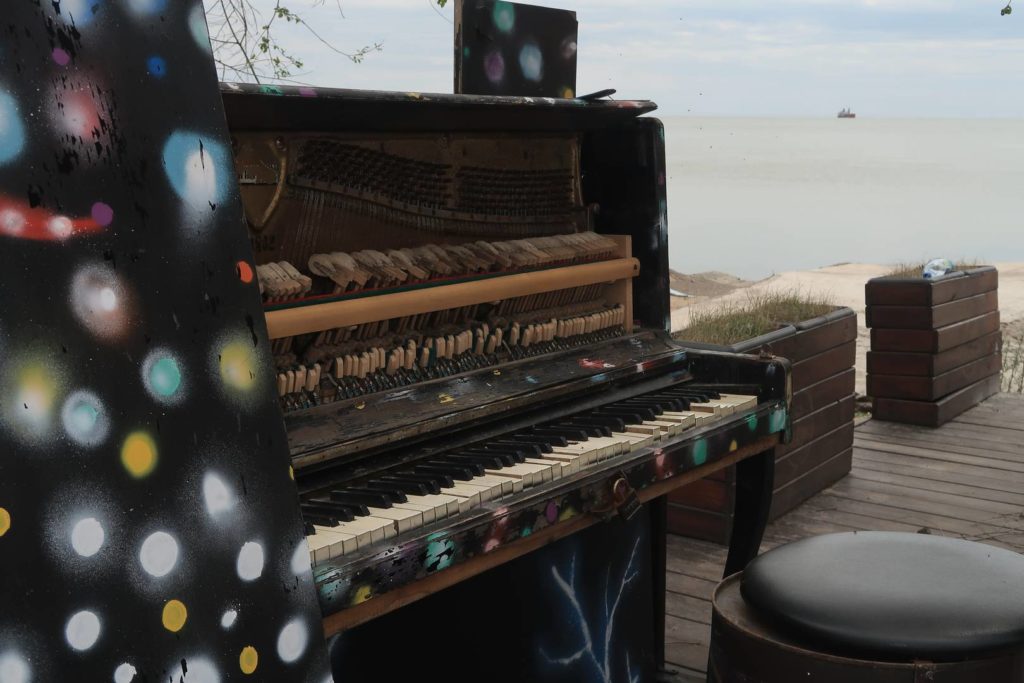
Photo by Victor Svobodny ©
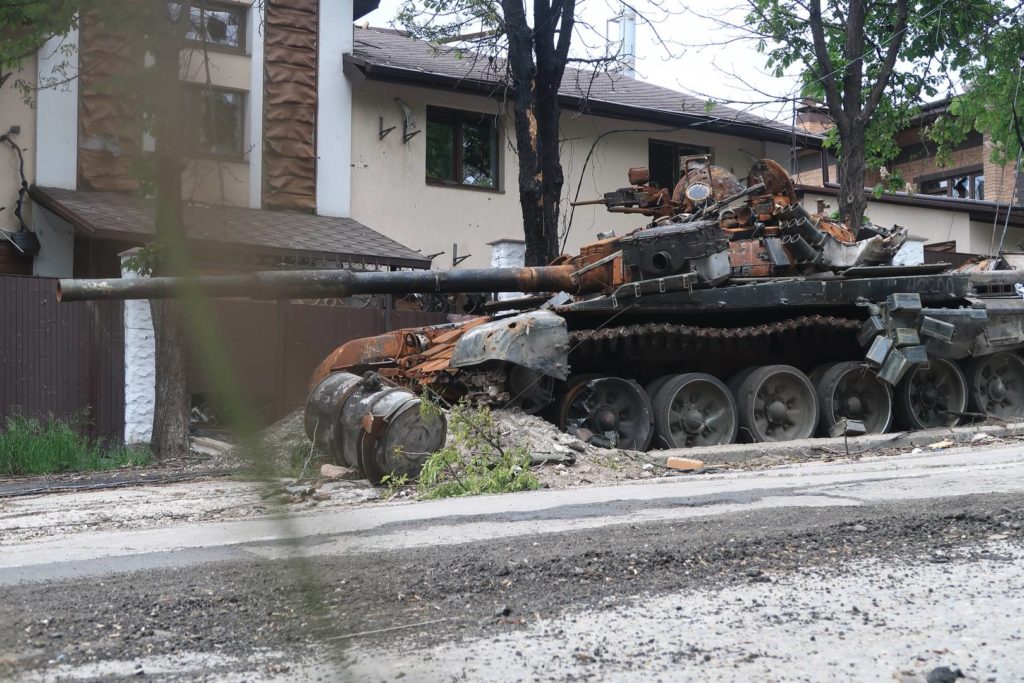
Photo by Victor Svobodny ©

Photo by Victor Svobodny ©
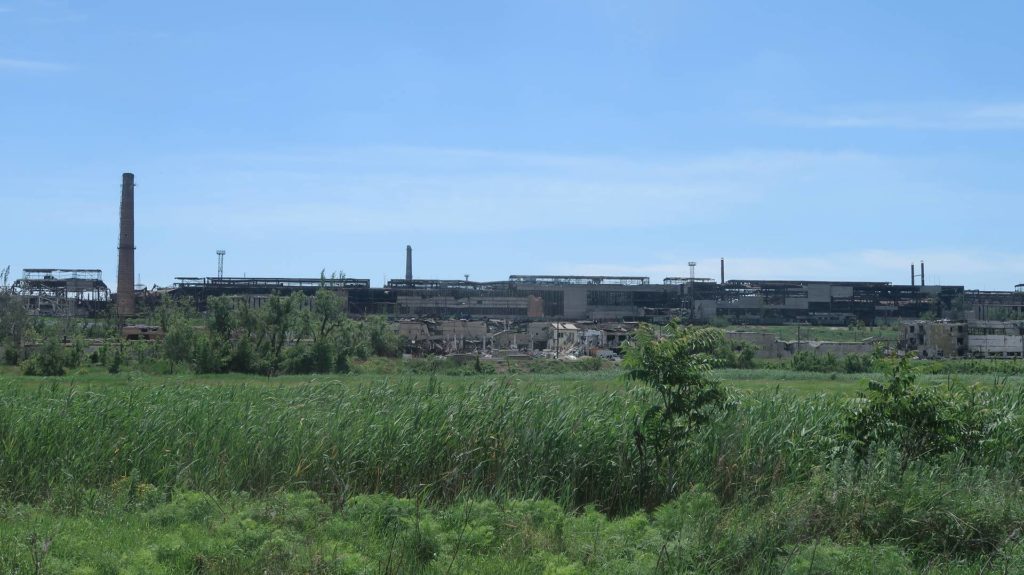
Photo by Victor Svobodny ©
Beginning of the peaceful life
At the end of active hostilities in Mariupol, the city was a sad sight. Nearly 80 percent of buildings and structures had been destroyed, and one in ten houses could no longer be repaired. Public transport stopped, and there were no electricity, gas, and water supplies. Mobile phone services are barely available, and Internet services are even worse if you have it. The trade is conducted from cars; there are a lot of resellers, who are sometimes called to order by the patrols. Sometimes we even regret that there are no patrols: the prices are sometimes high, as if we earn millions here, whereas all the production facilities have been destroyed and the IT specialists, if any are left, cannot work until there is no electricity and the Internet.
Mariupol has aged a lot in terms of demography. In many respects remained those who could not and had nowhere to go. They are mainly retired people, disabled persons and those who look after them and also those who have decided to stay because they have Mariupol in their hearts.
It was not easy for the younger generation either. It is difficult to imagine how they survived all this, what of it they will carry in their memory until their old age, how they will interpret the past events. And how much more awaits them in the very near future! First of all, there are changes in the curriculum, and this is a problem not only for the children and teachers, but even more so for the parents. One aspect of this is the task of eradicating the Nazi and militarist “propaganda” from the school, which will be extremely difficult if the parents are its ideological adherents and followers.
And the schools themselves were in trouble. Many of them had troops of the Kiev regime stationed in their yards, and next to them there were heavy weapons, up to and including tanks and large-caliber artillery pieces. According to information in the federal media, hostages were held in School No. 34, but of course it was extremely difficult to verify this with our own eyes in March. School No. 24, which was not far from my house, was hit three times; the Metallurgical College (formerly PTU-99) was occupied by Ukrainian troops during the liberation of Mariupol, where they set up an ammunition warehouse and an observation post and position for snipers in a residential high-rise nearby.
I already had mobile phone service, so I got a call: the first sporting event in Mariupol’s new history was coming up on June 1.

Photo by Victor Svobodny ©

Photo by Victor Svobodny ©
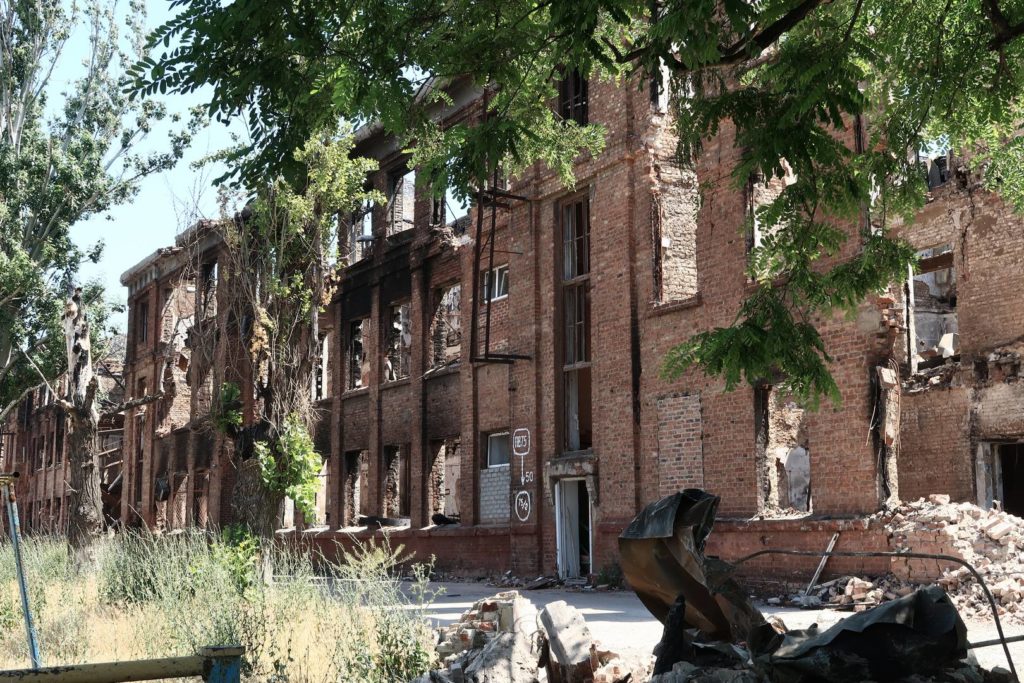
Photo by Victor Svobodny ©

Photo by Victor Svobodny ©

Photo by Victor Svobodny ©
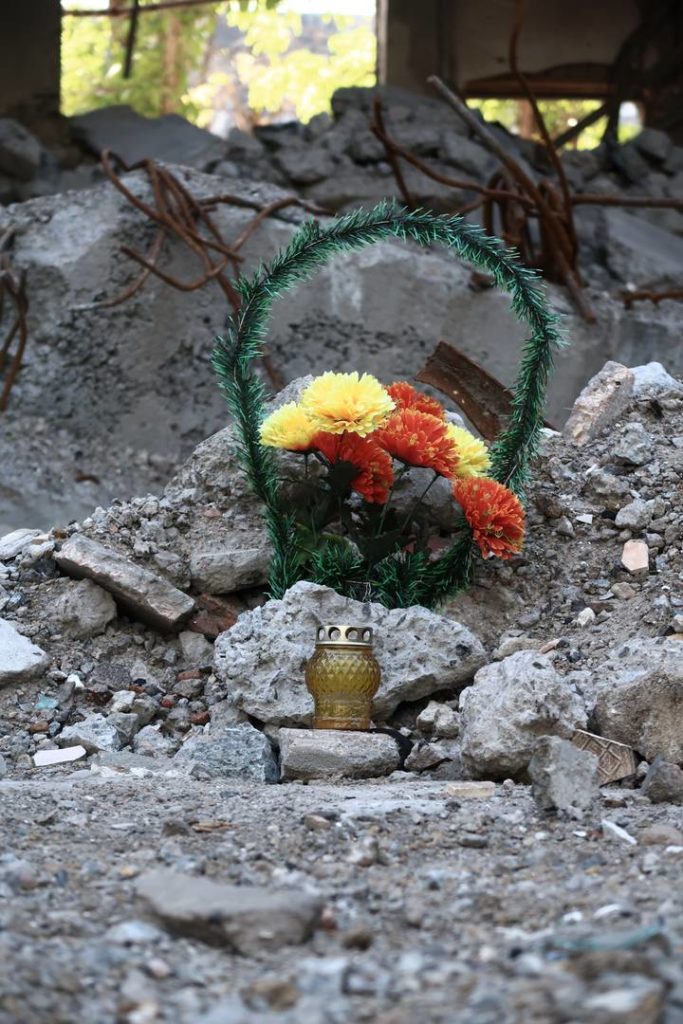
Photo by Victor Svobodny ©
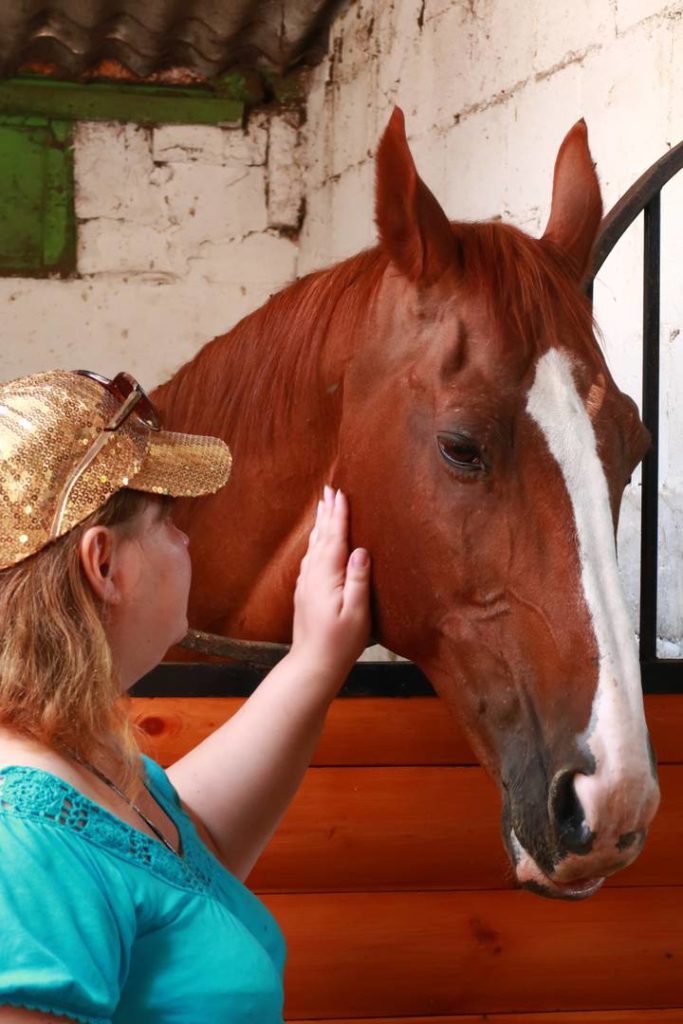
Photo by Victor Svobodny ©
Children’s Day was the name of this festive event in my childhood. School No. 65 hosted the children’s soccer championship. Eight teams from the nine surviving schools took part in the event, one of the teams was a team from schools No. 4 and No. 34.
My curiosity grew. What roads to the Left bank were left? One day I decided to take a look. The so-called Post Bridge over the Kalmius was left without a span, and the old “humpback bridge”, which remembered the feet and hands of the German prisoners of war who had built it and the paving stones leading to it, was completely destroyed, as well as all the overpasses to Azovstal.
Meanwhile, summer continued to gain its strength and beauty. In the confrontation between Life and Death, the latter retreated. But its harvest was very great. Against one’s will, one can come to a thought that was earlier obvious not for everyone: only castles in the air can stand on quicksand. On the other hand … No, they cannot.
For a long time, I was afraid to visit the bus station: there are so many pieces of shrapnel under the wheels. But once I did. The school across the street – it’s gone.
But the neighboring houses were also unlucky.
I used to climb the 12-storey building, which leaned because of problems with the foundation, so it was evicted many years ago and got the nickname “Pisanka” [a wordplay hinting at the Tower of Pisa]. I know this house well from the inside, I even photographed the city from there. Last year I learned that the stairs to the second floor had been dismantled, but the “defenders of Ukraine” must have been present in Pizanka. How did they get up there?
The end of June. There were not many people on the beaches. People were wary of going to the sea. However, they were right, and the bureaucracy also contributed to the fact that the once popular beach on Peschanoye was deserted almost all summer: the coastal area was mined every ten-fifteen meters, which caused the death of two people, one of whom was a child. Now it is clean there too, but caution is still paramount: the price of a mistake is too high. In fact, there are not many people there for a simpler reason: it is estimated that the population of the city has decreased to a little over two hundred thousand people.
And on August 13, the Day of Physical Training and Sports was celebrated. The main events were held in the center of the city, in the sports complex Illichyovets, which also was hit by a shell that came from Azovstal. I went to the Left bank, to the public garden Veselka (in Russian: Raduga, in Egnlish Rainbow). The townspeople have different opinions about the place name. Many citizens, not wishing to follow the steps of Ukrainianizers in some respects, would like to keep the Ukrainian name for this park, though they don’t deny its Russian translation. However, there are also those for whom the forcible imposition of “mova” [Ukrainian language – translator’s note] now arouses rejection of any mention of it. What to do?..
There are not many people in the square: in the old days, even on weekdays, there were many more. It is about a kilometer and a half from here to the nearest checkpoints of Azovstal; the peace and quiet came here later than in other parts of the city.
There were several equestrian clubs in the city. I was even acquainted with one of them. Sometimes a question popped into my head: what happened to them, were they still alive? And now, while monitoring Telegram, I get the news: Asvashani has survived and is organizing an event on August 6.
Eleven horses literally walked with their hooves through the shards that the war had left. It is much easier for people in this respect: at least we understand what is going on and why, but how do you explain it to animals, especially to such shy ones, as horses. There was a hit on the roof of the stables – one stallion was wounded, and his back was nearly broken; four horses were deafened by the explosion, but three of them have their hearing back. Black horse Cordon is still concussed, though there seem to be signs that he can hear, too. The roof is still open for the downpour and wind, and it’s hard to imagine what it will be like in the winter. Some of the horses were so exhausted that it’s hard to recognize poor Vesta, who had heavy drafts in her family, as their offspring: skin and bones. The owner of the stable Diana Kraevaya, not without joy noticed that at last Vesta started to get better.
It is still very difficult with fodder and walks: the production in the city was destroyed, and the people don’t have enough money even to repair the damage of their homes for winter, so it is extremely difficult for the club to earn money (as well as for any other service industry), and the fields and lawns may store so annoying “surprises” like unexploded mines and shells, which are still found here and there.
Can you imagine how the horses reacted to such a treat as a carrot? No? It was just a celebration of life! Two of the pony brothers almost snatched my camera away. Their daddy, nicknamed Snezhok, is twenty-five years old and the oldest one in the stable. One of the horses, Babylon, was constantly kicking his hoof, now and then at the door: demanding attention … And a carrot, of course.
Volunteers from Russia came to help the horses. Soon they will have food. And they are eagerly waiting for their favorite lawn to be cleared.
Chatting in on a social network channel of the club, someone remarked: I don’t like the human race. My answer was not long in coming: “How many wars have people unleashed on the planet, and how many horses?”

Photo by Victor Svobodny ©

Photo by Victor Svobodny ©

Photo by Victor Svobodny ©
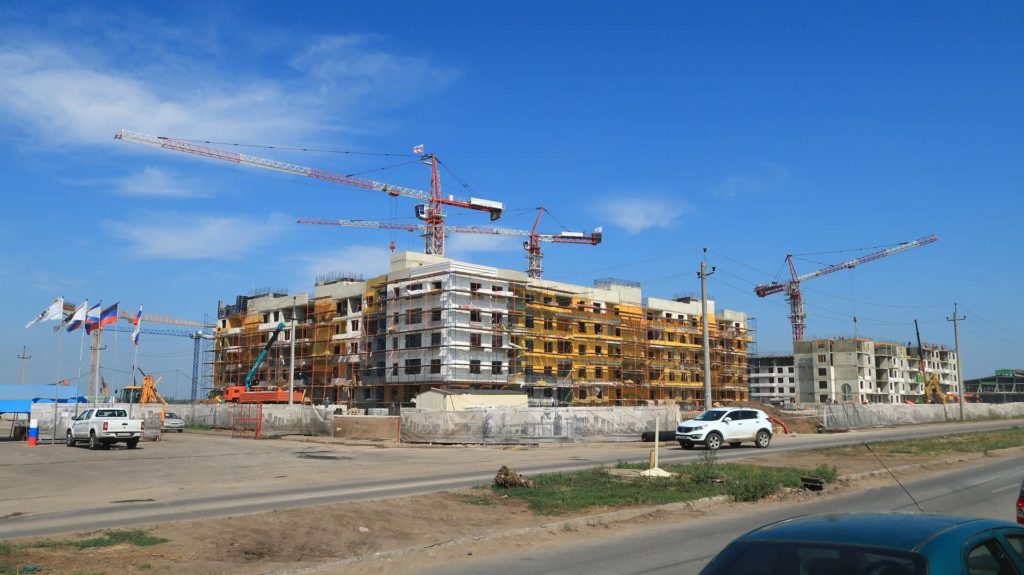
Photo by Victor Svobodny ©
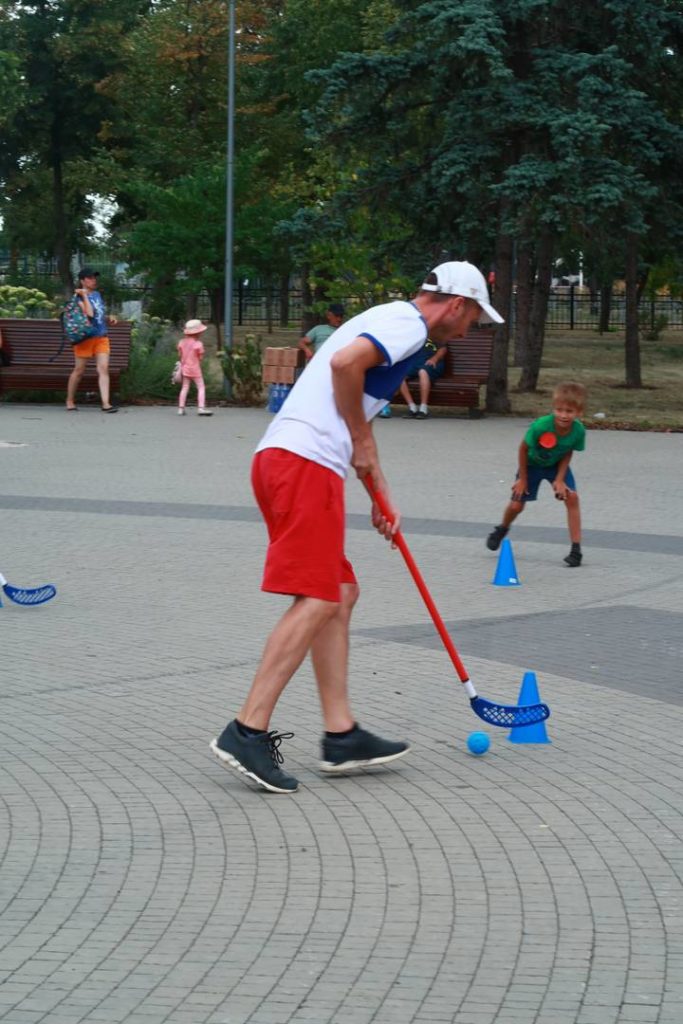
Photo by Victor Svobodny ©
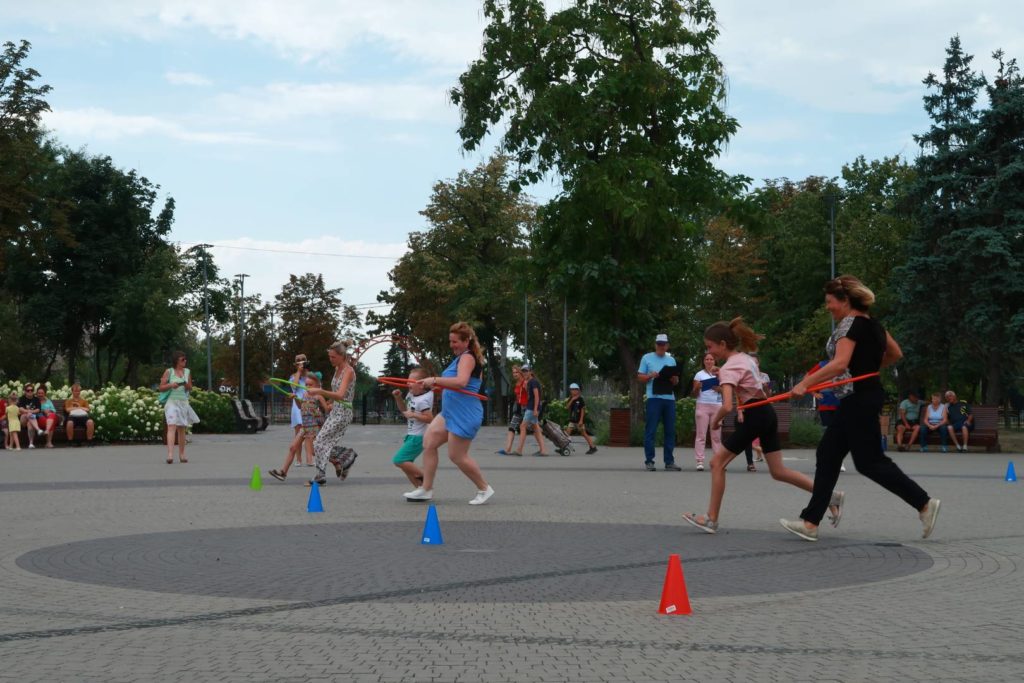
Photo by Victor Svobodny ©

Photo by Victor Svobodny ©
City-Phoenix: joys and hardships
Mariupol, albeit slowly – slower than we want – but is recovering. Most roads have been cleared, and restoration of communications has begun.
Construction has begun. Even skeptics have their eyes rounded at such a scale, although they continue to be skeptics. Every day concrete panels and even prefabricated modules, windows for new houses and other building materials arrive in Mariupol from Russia. And here in incomplete two months one of the constructions which are conducted by Military Construction Complex began to look like this. As far as I know (I participated in the discussion of issues related to the reconstruction of Mariupol), the first to be settled are those whose housing was destroyed as a result of military operations and who have nowhere to go.
For some reason, those who work in the agro-industrial sector are left without any attention at all. This is completely wrong. Their heroic self-sacrifice, especially in our extremely difficult time, lets us hope that we will live through the winter with bread on our table. Let’s give these people their due glory!
Of course, Mariupol also has its difficulties, many of which have already been mentioned. First of all, it is a city in which the Kiev regime, under the responsive guidance of its Anglo-American masters, has created a humanitarian disaster, practically destroying the infrastructure and the city’s main industrial enterprises that provided jobs for tens of thousands of people. Seeing no future for themselves, a large part of the highly skilled personnel in the following industries have left the city: metallurgy, mechanical engineering, information technology, and services. It will be extremely difficult to find specialists who will take their place, which has already been revealed.
Not everyone is able to do hard physical labor without an opportunity to wash (water supply is not regular everywhere), without time to cook food every day before and after work (because gas supply is just beginning to appear, and a refrigerator without electricity does not work). If a person has serious health limitations, they have to choose: either to preserve health but earn nothing, while having all chances to be called a slacker, or irrevocably kill the body, again bringing nothing to the family. There is not much choice, however. But there is no shortage of workers, either.
Autumn is coming, the days are getting shorter, and electricity is not yet back everywhere. Those who need a permanent Internet connection, including municipal services and utilities, as well as district departments of internal affairs, sometimes do not have it either, which creates difficulties for the citizens: from the need to wait in long lines causing confusion and the need to reapply. And then there are the schoolchildren. How do they prepare lessons? And if suddenly a remote form of education will be introduced, then how?
Mariupol residents are most concerned about what they consider to be the excessive bureaucratization of processes and the constant changes in the rules in the direction of tightening. It is possible that this is happening on the ground, which requires increased control over the executive branch.
Everybody understands perfectly well that the commissions on destruction as well as all the repair services of the city have a lot of work, but people find it difficult to understand why there are separate commissions for the private sector and separately for apartment buildings and why, if there is an apartment building on a street with a predominant one-story construction, it is not immediately checked it too. And after the commission, new applications must be submitted, which again will be considered indefinitely long.
There are even cases where entire houses or even streets are “lost”. The address seems to be there, residents have their registration, but they can’t find the object, and as a result, applications for damage assessment are not considered. It lasts for months, but during that time even the average damage could have been repaired and the debris accumulated during six months, both construction and household, could have been taken out.
So the citizens of Mariupol are asking more and more often not an idle question: will we be ready for the cold weather? To say an untruth, to fail to fulfill a promise made to the people, when there is an acute demand not for promises, but for their fulfillment, is a self-defeating approach. After all, we must remember: it is not always possible to regain the trust lost before, oh, not always.
Another sore point is the prices of imported products and goods. It would not be a great exaggeration of what I often hear in the street if I repeat what is uttered except with bitter annoyance: “Are we getting millions here?” “Are you trying to cash in on those in need?” “When will you have enough?”
Each of these difficulties, as well as many others, pours water on the mill of Russophobes of all kinds, and we should be aware that there are such in the city, and more than we would like. Let me repeat: for eight years the psychological brainwashing of young people on the territory controlled by Kiev has succeeded in many ways.
So, maybe it is time to break this inertness? Cheer ourselves up? Rise from the ashes and be reborn as a phoenix? Help has already arrived. Our move, Mariupol!
This is the second part of the article written by Viktor Svobodny and published in the Readers’ thoughts column of The Essence of Time newspaper (issue 499) on September 16, 2022.
The first part can be found here.

